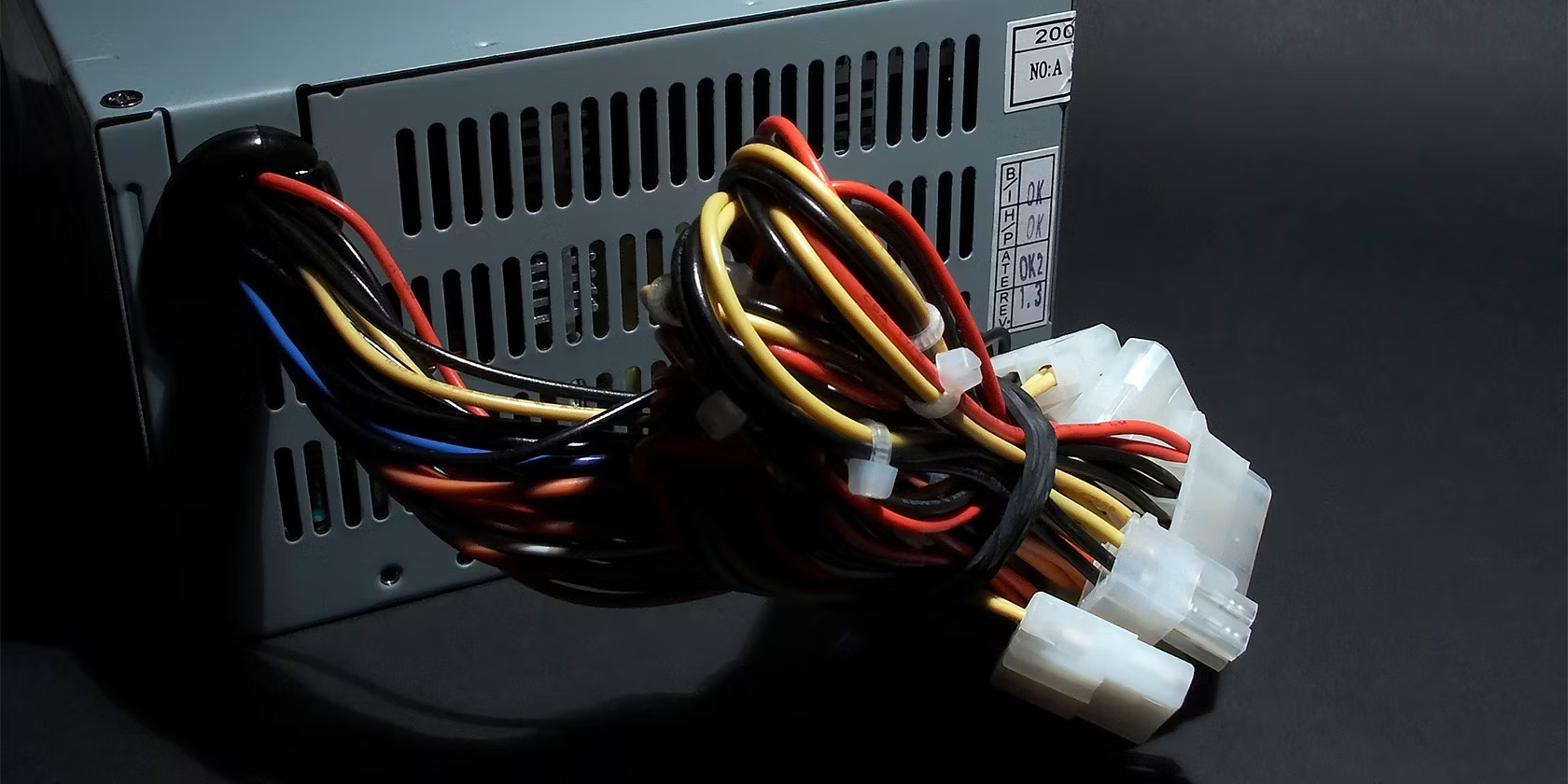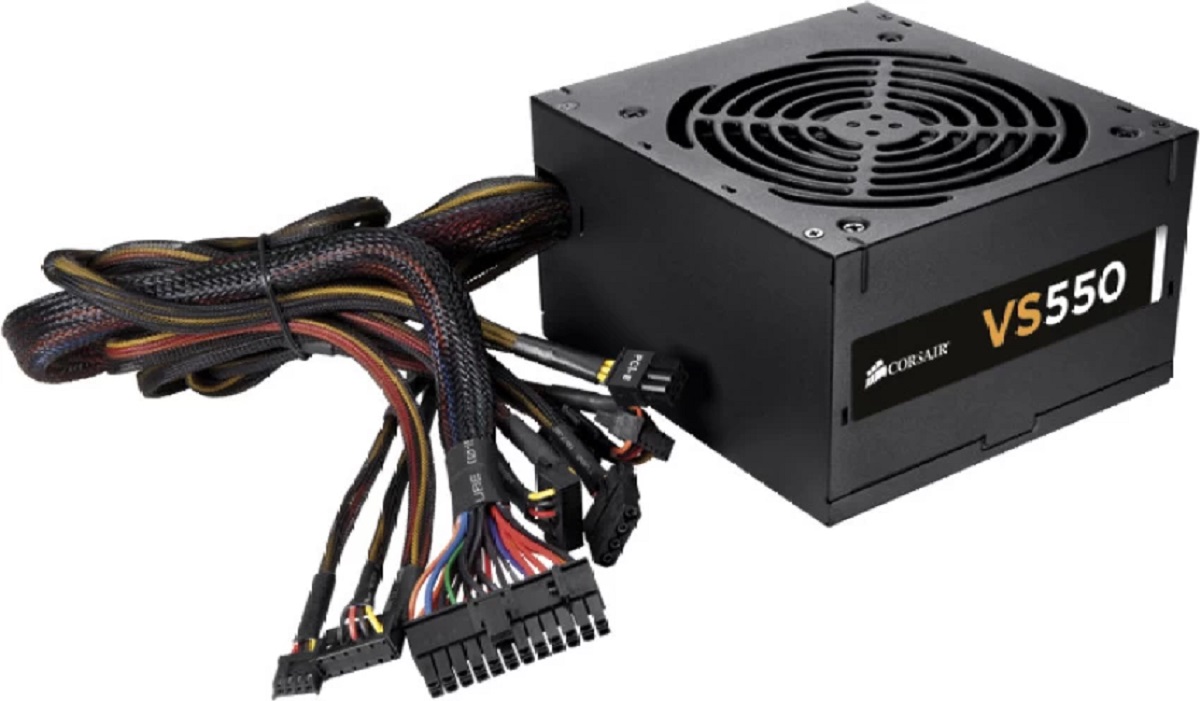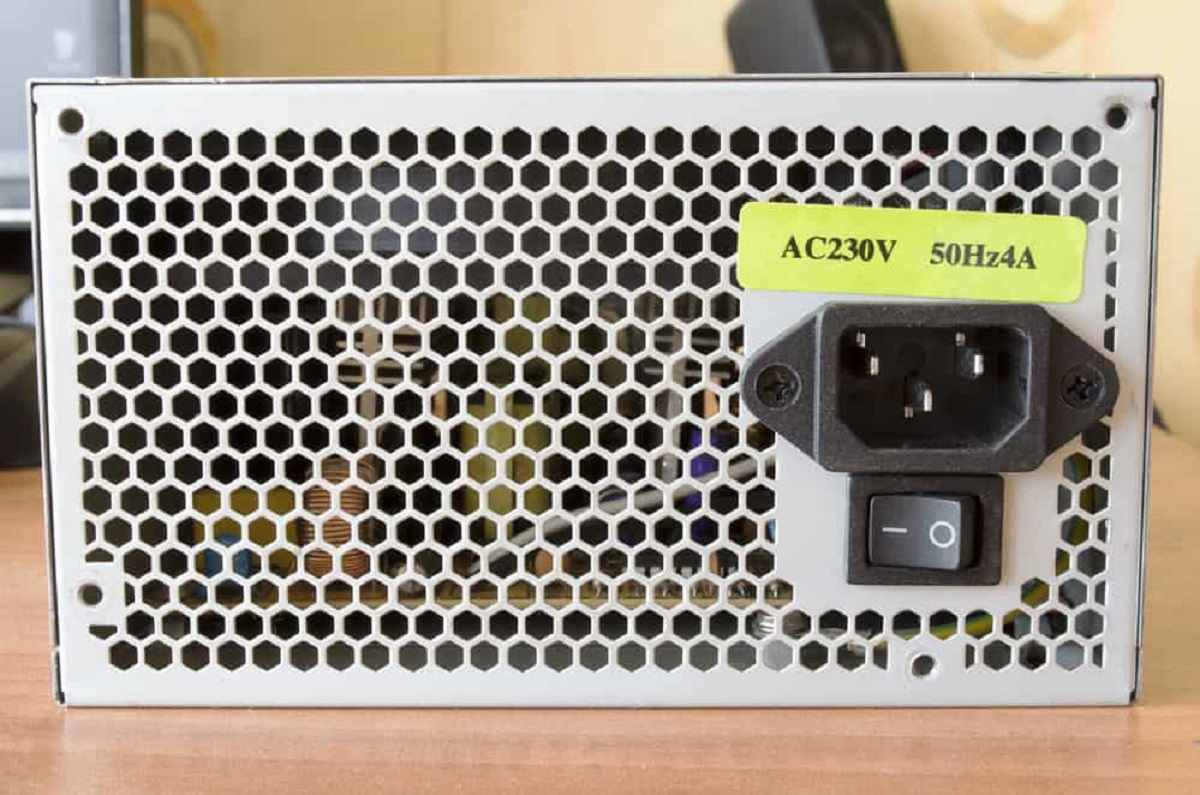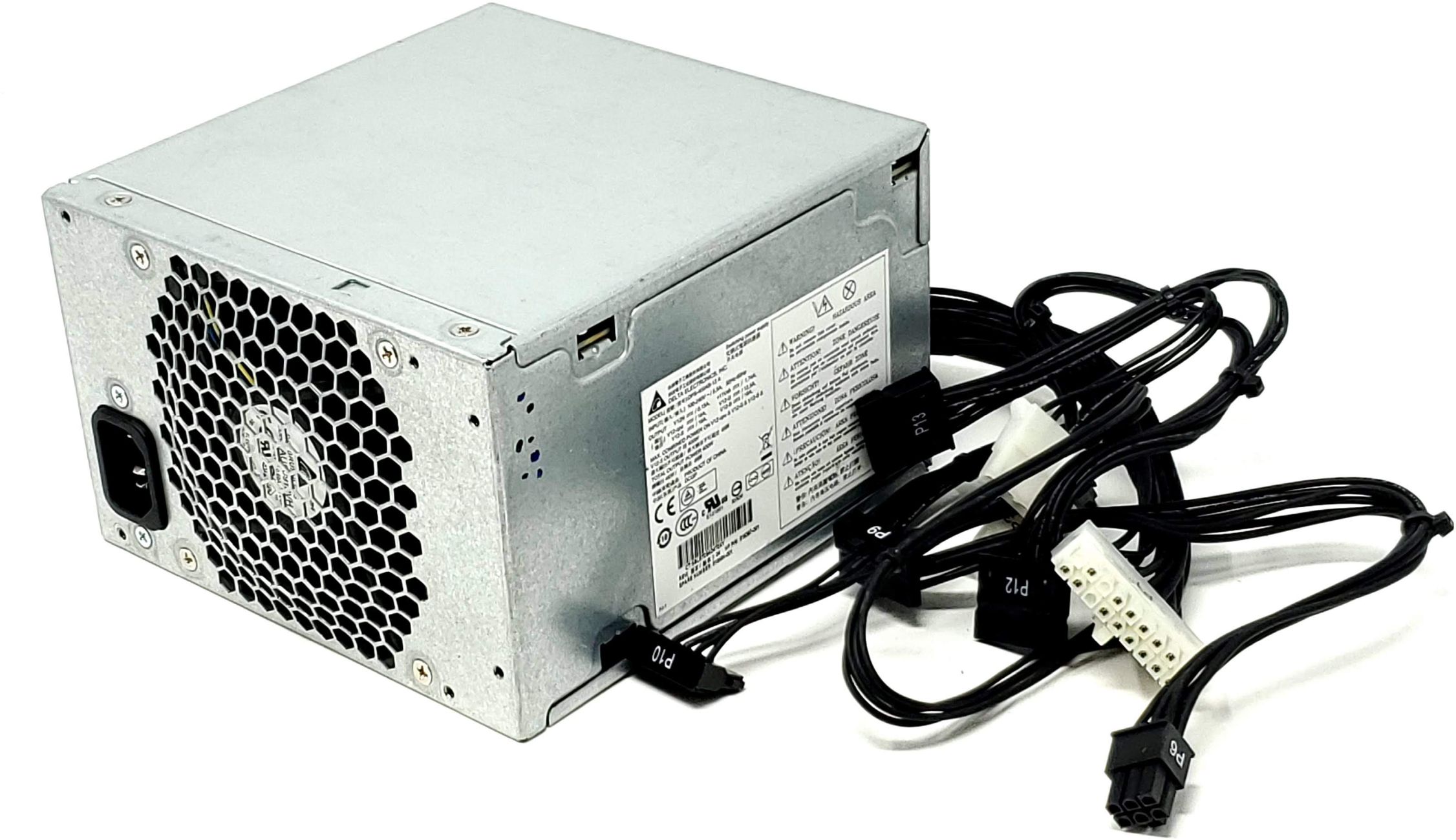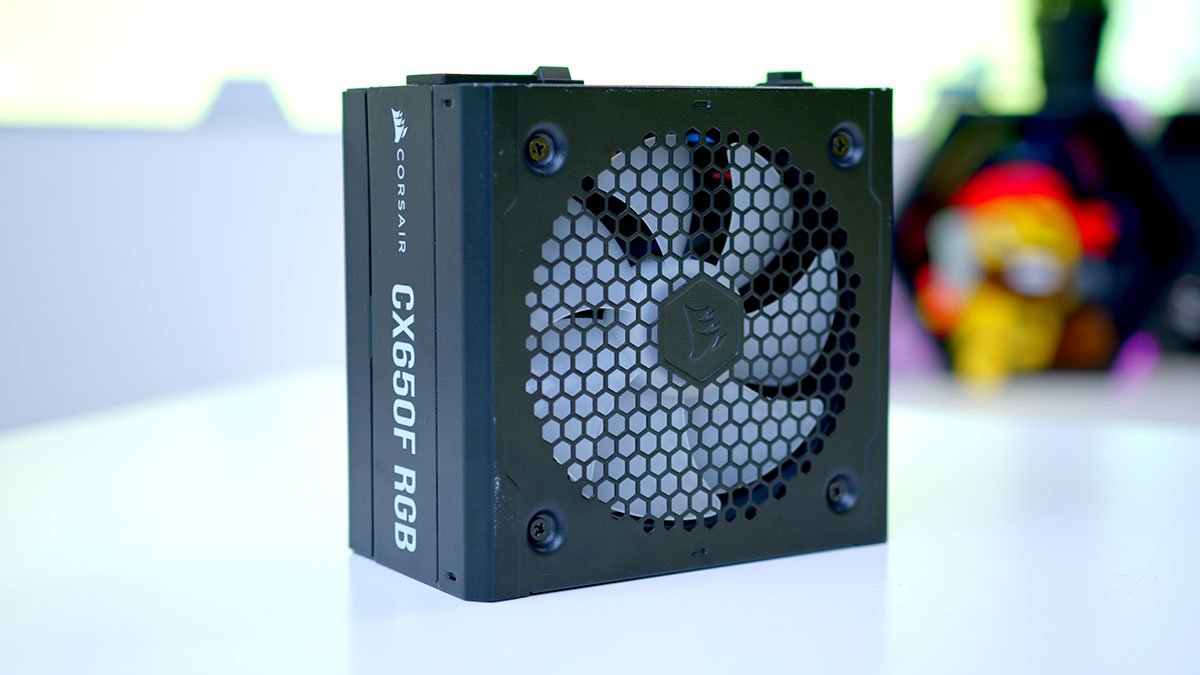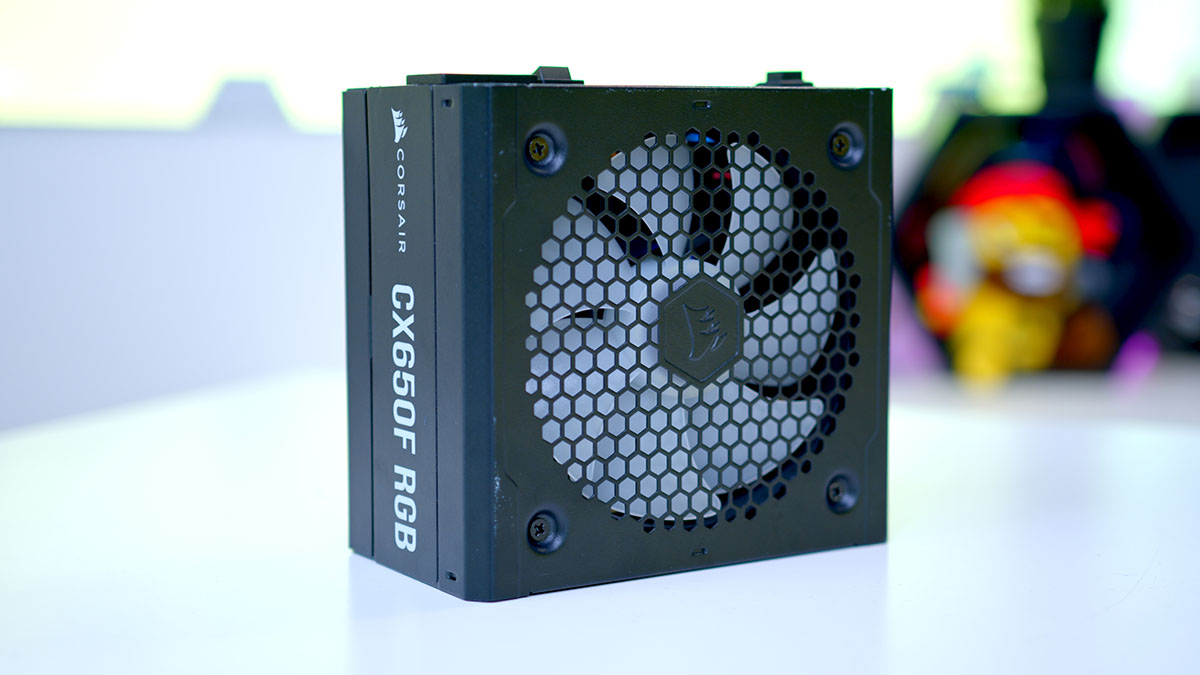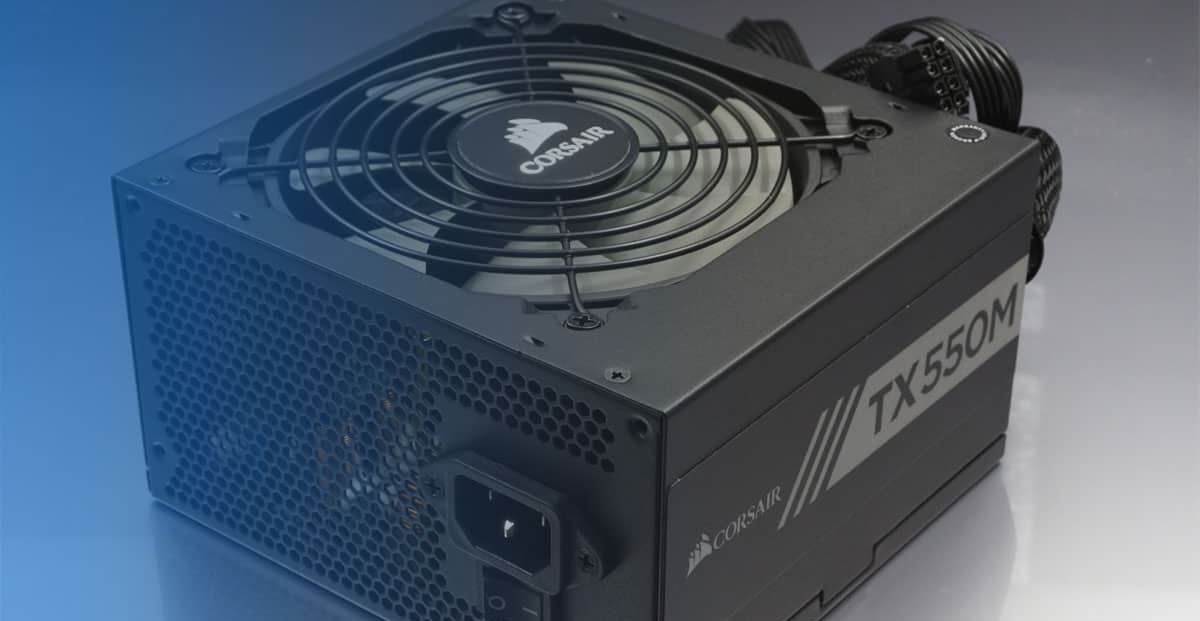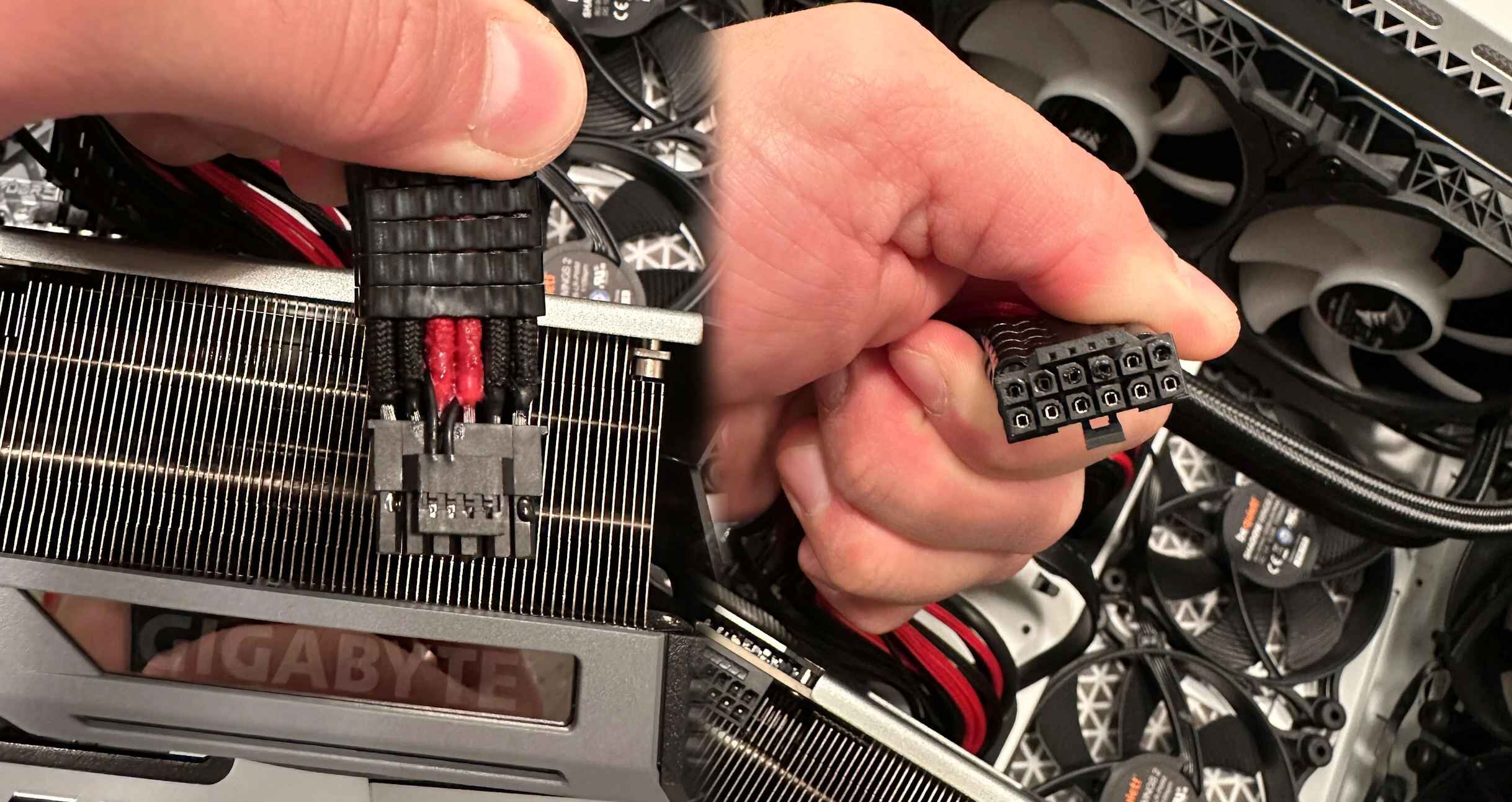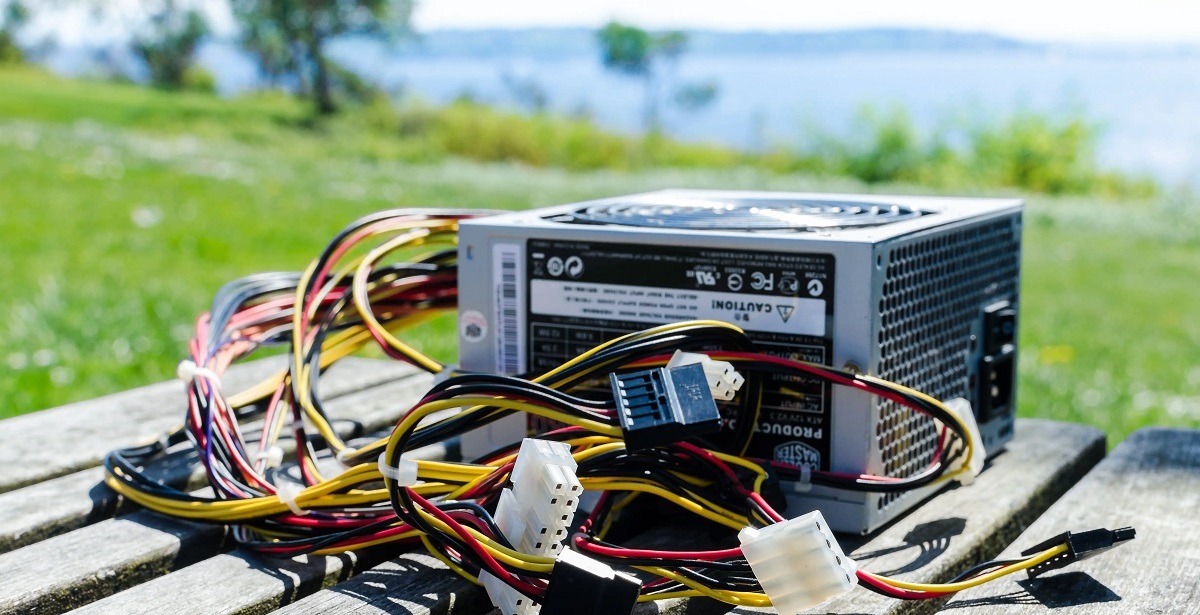Introduction
Upgrading the Power Supply Unit (PSU) of your computer is a decision that many overlook or underestimate. Often overshadowed by more glamorous hardware components like processors and graphics cards, the PSU plays a critical role in the stability and performance of your system. A reliable and efficient PSU is crucial for providing clean and stable power to all the components, ensuring their optimal functionality.
The PSU is responsible for converting the AC power from your wall outlet into the DC power that your computer components require to operate. It acts as the backbone of your system, powering everything from your motherboard, processor, and memory, to your hard drives, graphics cards, and other peripherals. Without a proper and healthy PSU, your computer may experience issues like random shutdowns, crashes, or even component failure.
In this article, we will explore the signs that indicate your PSU may be aging or inadequate for your current system, and why upgrading it can be beneficial. We will also discuss important considerations, such as power requirements of new components, GPU upgrades, overclocking, efficiency, compatibility with future upgrades, noise levels, and the overall benefits of upgrading your PSU.
Signs of an Aging PSU
Identifying the signs of an aging PSU is essential to determine if it’s time for an upgrade. Here are some indicators that your PSU may be reaching the end of its lifespan:
- Random Restart or Shutdown: If your computer restarts or shuts down unexpectedly, particularly when under heavy load or during tasks that require more power, it could be a sign of an aging PSU struggling to deliver consistent power to the components.
- Intense Coil Whine: Coil whine is a high-pitched noise that can occur when components vibrate due to electrical currents. While a small amount of coil whine is normal, excessive and irritating noise can be a symptom of a failing or inadequate PSU.
- Frequent Blue Screens: Blue screens of death (BSODs) can be caused by various factors, including software issues. However, when accompanied by other symptoms like system instability or strange noises, it may indicate a faulty PSU.
It’s important to note that these signs or symptoms can also be due to other factors, including software conflicts or hardware issues. However, if you’ve ruled out other potential causes and are still experiencing these issues, it’s worth considering a PSU upgrade.
Additionally, if your PSU is several years old and you’re planning to upgrade other components like the processor or graphics card, it’s recommended to assess whether your existing PSU can handle the increased power requirements. As technology advances, newer components often demand more power, and an old PSU may struggle to meet these demands, leading to instability and performance issues.
In the next section, we will discuss the power requirements of new components and how it impacts the need for a PSU upgrade.
Power Requirements of New Components
The power requirements of new components, such as processors, graphics cards, and storage devices, can significantly impact the need for a PSU upgrade. As technology advances, these components become more power-hungry to deliver increased performance. Therefore, it’s crucial to consider whether your existing PSU can adequately handle the power demands of these new components.
Processors, for example, have evolved to feature more cores and higher clock speeds, resulting in increased power consumption. Similarly, modern graphics cards have become more powerful, with higher core counts and boosted clock speeds, which also translates to a higher power draw. These advancements allow for better gaming and rendering capabilities but necessitate a robust and sufficient power supply.
When upgrading to a new processor or graphics card, it’s essential to consult their specifications or manufacturer guidelines to determine their power requirements. Graphics cards, in particular, often have recommended power supply wattage requirements listed, giving you a clear indication of the minimum PSU capacity needed for optimal performance.
Storage devices such as SSDs and high-capacity hard drives also require power to function efficiently. While their power draw may be relatively lower compared to processors and graphics cards, it’s still essential to consider their cumulative impact on your system’s power supply. Additionally, if you’re planning to install multiple storage drives, such as in a RAID configuration, their combined power requirements may further warrant a PSU upgrade.
By understanding the power requirements of new components, you can ensure that your PSU is capable of delivering adequate power to your system. Insufficient power supply can lead to instability, performance issues, and even damage to the components themselves. In the next section, we will explore the considerations when upgrading your GPU and its impact on the power supply.
GPU Upgrade Considerations
When considering a GPU upgrade, it’s crucial to take into account the impact it may have on your power supply. Graphics cards are one of the most power-hungry components in a computer, and a significant upgrade in terms of performance may require a more robust PSU to ensure stable power delivery.
Firstly, check the power requirements of the new GPU you are considering. Most manufacturers provide power recommendations or minimum PSU wattage requirements for their graphics cards. Ensure that your existing PSU meets or exceeds these requirements to avoid any power-related issues.
It’s also important to consider the availability of power connectors on your PSU. Higher-end graphics cards often require additional power connectors, such as 6-pin or 8-pin PCIe connectors, to supply the extra power they need. Ensure that your PSU has the necessary connectors to support the new GPU. If it doesn’t, you may either need to upgrade your PSU or opt for a lower-power GPU that is compatible with your current power connectors.
Another factor to consider is the overall power draw of your system when upgrading the GPU. If you’re already running a high-end processor, multiple storage devices, and other power-hungry components, adding a more powerful graphics card to the mix may push your PSU to its limits. Upgrading to a higher wattage PSU will provide additional headroom and ensure that your system can handle the increased power demands without stability issues.
Additionally, if you’re planning to overclock your GPU for improved performance, you’ll need to account for the increased power draw. Overclocking can significantly increase a GPU’s power consumption, so upgrading to a PSU with a higher wattage rating is advisable to ensure sufficient power delivery during overclocking.
Considering these factors is crucial to avoid power-related issues and to ensure that your computer runs smoothly with the upgraded GPU. In the next section, we’ll discuss the impact of overclocking and power draw on the PSU.
Overclocking and Power Draw
Overclocking is a popular practice among gamers and computer enthusiasts to extract additional performance from their components. However, it’s important to consider the impact of overclocking on your power supply. Overclocking significantly increases the power draw of the component being overclocked, which can put additional strain on your PSU.
When you overclock your CPU or GPU, it allows them to operate at higher clock speeds or voltages, resulting in improved performance. However, this increased performance comes at the cost of higher power consumption. As a result, the power requirements of your overclocked components may exceed what your current PSU can provide.
If you plan on overclocking, it’s crucial to ensure that your PSU has enough capacity to handle the increased power draw. An inadequate PSU may result in instability, crashes, and even component damage. It’s recommended to upgrade to a PSU with a higher wattage rating to provide sufficient power for both the stock and overclocked settings of your components.
When it comes to overclocking, it’s also important to bear in mind that not all CPUs and GPUs are created equal. Some processors or graphics cards may have better overclocking potential than others due to factors like architecture, cooling capabilities, and silicon quality. As a result, the power draw of overclocked components may vary based on their specific capabilities and settings.
To ensure proper power supply and stability during overclocking, it’s essential to monitor the temperatures and power consumption of your components. Use software utilities or monitoring tools to keep an eye on these parameters and make adjustments if needed. Proper cooling, such as using aftermarket CPU or GPU coolers, can also help maintain lower temperatures and reduce power draw during overclocking.
By considering the power draw associated with overclocking and upgrading your PSU accordingly, you can enjoy the benefits of increased performance without compromising the stability and longevity of your system. In the next section, we will discuss the importance of efficiency and power savings when upgrading your PSU.
Efficiency and Power Savings
Efficiency is an important consideration when upgrading your PSU. PSU efficiency refers to how effectively it converts AC power from the electrical outlet to DC power for your computer components. A more efficient PSU not only helps reduce the strain on your electricity bill but also minimizes heat generation and environmental impact.
PSU efficiency is typically represented by an 80 Plus certification rating, which indicates the percentage of input electricity that is converted into usable DC power. Higher-rated certifications, such as 80 Plus Bronze, Silver, Gold, and Platinum, signify greater efficiency levels. When upgrading your PSU, opting for a more efficient model can lead to several benefits.
Firstly, a more efficient PSU reduces wasted energy, as less power is lost as heat during the conversion process. This means a higher percentage of the electricity drawn from the wall outlet is actually utilized by your computer components. Ultimately, this translates to cost savings on your electricity bill, especially if your computer is consistently running or remains in sleep mode for extended periods.
Secondly, an efficient PSU generates less heat, which helps maintain lower temperatures inside your computer case. This can contribute to better overall system stability and longevity. Heat is one of the primary factors that can affect the performance and lifespan of your components, so reducing heat generation is beneficial to the health of your computer system.
Lastly, an efficient PSU has a positive impact on the environment. By consuming less energy from the electrical grid, you contribute to the collective efforts of reducing carbon footprints and conserving resources. Investing in a higher-rated PSU not only benefits your computer but also supports sustainable and eco-friendly practices.
While efficiency is an important consideration, it’s important to note that higher-rated PSUs generally come at a higher cost. However, the long-term savings in energy bills and the added benefits of system stability and environmental impact make it a worthwhile investment.
In the next section, we will discuss the importance of noise and fan speed considerations when upgrading your PSU.
Noise and Fan Speed
When upgrading your PSU, it’s important to consider the noise levels and fan speed, as they can impact the overall experience of your computer usage. The PSU fan is responsible for cooling the internal components of the power supply, and its noise can be a significant factor in the overall system noise.
Older or lower-quality PSUs may have louder fans that produce noticeable noise levels, which can be distracting or annoying, especially during quiet moments or when performing tasks that require lower system load. Upgrading to a newer and higher-quality PSU can often result in quieter operation, thanks to advancements in fan technology and better overall design.
Additionally, PSU fans are designed to spin faster or slower based on the temperature inside the power supply. As the load on the PSU increases, the fan speed ramps up to ensure adequate cooling. Conversely, during lower load or idle periods, the fan speed decreases to reduce noise levels.
When upgrading your PSU, look for models that advertise low noise levels or utilize technologies like fanless designs or semi-passive modes. Fanless PSUs eliminate the fan altogether, relying on passive cooling through heatsinks. While this can result in silent operation, it’s important to ensure proper airflow within the computer case to prevent overheating.
Semi-passive PSUs, on the other hand, have fans that remain idle or run at low speeds during low load conditions. As the system load increases, the fan automatically starts spinning at a higher speed to maintain optimal cooling. This feature allows for a quieter computing experience during everyday tasks, but still provides efficient cooling during demanding activities.
By choosing a PSU with noise-reducing features, you can minimize the impact of fan noise on your overall system experience. A quieter PSU can contribute to a more pleasant and peaceful computing environment, particularly for users who value a quieter setup.
In the next section, we will discuss the compatibility considerations with future upgrades when selecting a new PSU for your computer system.
Compatibility with Future Upgrades
When upgrading your PSU, it’s important to consider compatibility with future upgrades. As technology progresses, you may want to add more powerful components or expand your system’s capabilities. Ensuring that your PSU can support these future upgrades will save you from the hassle and expense of having to upgrade the power supply again.
One important factor to consider is the wattage rating of the PSU. Higher-wattage PSUs provide more headroom for future upgrades, as they can handle the increased power demands of more powerful components. It’s advisable to choose a PSU with a wattage rating that exceeds your current needs, allowing room for future expansion without straining the power supply.
Another consideration is the availability and types of power connectors on the PSU. Ensure that your chosen PSU has enough connectors to support the components you plan to upgrade or install in the future. This includes connectors for the motherboard, graphics card, storage devices, and any additional peripherals or accessories you may need.
Additionally, if you plan to use advanced features like multi-GPU setups or water-cooling systems, you should verify that the PSU has the necessary support and power connectors for these configurations. Some high-end components require specific power connections, such as additional 8-pin or 12-pin connectors for high-end graphics cards, or SATA/Molex connectors for custom liquid cooling setups.
It’s also worth considering the form factor and physical dimensions of the PSU when it comes to compatibility with your computer case. Some cases may have size limitations that require a specific form factor, such as ATX, SFX, or TFX. Ensure that the new PSU you choose fits properly and doesn’t interfere with other components or obstruct airflow.
By considering compatibility with future upgrades, you can ensure that your PSU investment will continue to serve you well as you expand or enhance your computer system. This flexibility allows for a more future-proof setup and avoids the need for frequent PSU replacements.
In the next section, we will discuss the benefits of upgrading your PSU and summarize the key considerations discussed in this article.
Benefits of Upgrading PSU
Upgrading your Power Supply Unit (PSU) can bring several benefits to your computer system. Let’s explore the advantages of investing in a new PSU:
- Stability and Performance: A new and reliable PSU ensures stable power delivery to all your components, improving overall system performance and reducing the risk of crashes or random shutdowns.
- Power Efficiency and Savings: Upgrading to a more efficient PSU can lead to reduced electricity consumption, resulting in long-term cost savings on your energy bills and contributing to a greener environment.
- Noise Reduction: Many new PSUs come with advanced fan technologies and noise reduction features that result in quieter operation, creating a more pleasant and peaceful computing environment.
- Compatibility with Future Upgrades: A higher-wattage PSU with sufficient power connectors allows for future component upgrades, ensuring your system can handle the increased power demands of more powerful hardware.
- Additional Features: Upgrading your PSU can unlock new features and capabilities, such as modular cabling systems, which enable easier cable management and a cleaner build, improving airflow and aesthetics.
- Longevity and Reliability: Investing in a high-quality PSU with a reputable brand can provide better long-term reliability, reducing the risk of component damage and prolonging the lifespan of your entire system.
Overall, upgrading your PSU is a smart investment that can enhance the stability, efficiency, and future compatibility of your computer system. It offers a range of advantages, from improved performance and reduced energy consumption to quieter operation and better component protection.
It’s important to carefully consider your power requirements, compatibility with other components, noise preferences, and the long-term benefits when choosing a new PSU. By selecting the right PSU for your needs and aiming for a higher quality and efficiency, you can ensure a reliable and efficient power supply for your entire system.
In this article, we discussed the signs of an aging PSU, the power requirements of new components, GPU upgrade considerations, the impact of overclocking and power draw, efficiency and power savings, noise and fan speed, compatibility with future upgrades, and the benefits of upgrading your PSU. By understanding these key factors, you can make an informed decision when upgrading your power supply and enjoy the advantages it brings to your computer system.
Conclusion
Upgrading your Power Supply Unit (PSU) is a crucial consideration that is often overlooked when it comes to improving the performance and stability of your computer system. The signs of an aging PSU, power requirements of new components, GPU upgrade considerations, the impact of overclocking, efficiency and power savings, noise and fan speed, compatibility with future upgrades, and the overall benefits of upgrading PSU have been discussed in this article.
By identifying the signs of an aging PSU and understanding the power requirements of new components, you can determine if it’s time for an upgrade. Considering GPU upgrade considerations and the impact of overclocking ensures that your new PSU can handle the increased power demands. Additionally, choosing a PSU with high efficiency, lower noise levels, and compatibility with future upgrades provides long-term benefits for your system.
Upgrading your PSU brings several advantages, including improved stability, enhanced performance, power savings, reduced noise, future compatibility, and overall reliability. It is essential to carefully research and select a PSU that meets your power requirements, preferred noise levels, and other compatibility factors.
Investing in a high-quality and efficient PSU not only ensures a reliable power supply for your components but also contributes to an optimized and enjoyable computing experience. Consider all the factors discussed in this article to make an informed decision when upgrading your PSU and unlock the full potential of your computer system.







